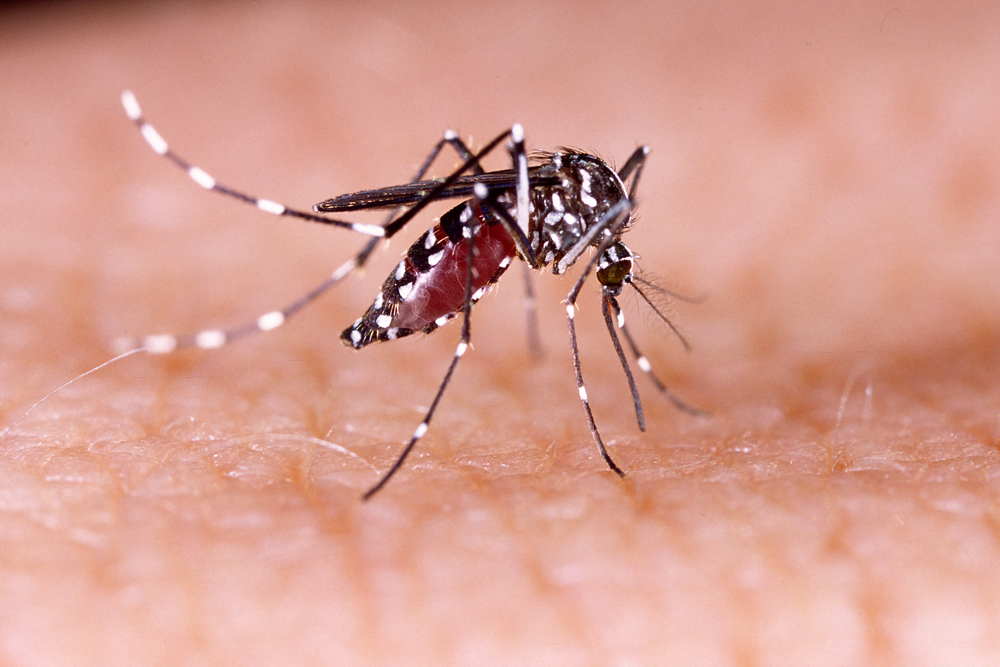
Zika wont travel far in usa – Zika won’t travel far in USA. This analysis delves into the geographic limitations of Zika virus transmission within the United States, exploring factors like mosquito distribution, climate variations, and historical outbreak patterns. We’ll also examine the role of human movement, international travel, and mosquito migration in potential spread. Public health strategies, the impact on healthcare, and environmental considerations are also explored.
Finally, travel recommendations and preventative measures are highlighted.
The virus’s ability to spread is complex. Factors such as mosquito species, their prevalence in different regions, and the climate play crucial roles. Understanding these factors allows for better public health planning and preventative measures.
Geographic Limitations of Zika Virus Transmission in the USA
The Zika virus, while a global health concern, has exhibited specific geographic limitations in its transmission within the United States. Understanding these limitations is crucial for effective public health strategies and preparedness. These constraints are largely due to the specific requirements for the virus’s vector (mosquito) and the geographic distribution of those vectors. The environmental factors influencing the mosquito’s survival and the virus’s viability also play significant roles in shaping the virus’s spread.The spread of Zika virus is intricately linked to the presence and behavior of specific mosquito species.
The virus is transmitted primarily by the
- Aedes aegypti* and
- Aedes albopictus* mosquitoes. These species are not uniformly distributed throughout the country, and their presence is crucial for the virus’s ability to circulate.
Mosquito Species and Geographic Distribution
Mosquito species critical for Zika transmission exhibit varied geographic distributions within the USA.
- Aedes aegypti*, a more tropical species, thrives in warm, humid climates, often found in urban and suburban areas.
- Aedes albopictus*, a more adaptable species, has a wider distribution, occurring in warmer regions and also in temperate climates. Their distribution patterns are influenced by factors like temperature, humidity, and the availability of breeding sites.
Climate and Environmental Conditions
The viability of the Zika virus is strongly influenced by environmental conditions. Warmer temperatures and higher humidity levels are generally conducive to both the survival of the virus within the mosquito and the mosquito’s own reproductive cycles. These conditions favor the vector’s ability to transmit the virus effectively. Conversely, colder temperatures and drier climates can significantly limit the virus’s spread.
The interplay between temperature, humidity, and rainfall patterns across various US regions dictates the virus’s transmission potential.
Historical Patterns of Zika Outbreaks in the USA
Historical Zika outbreaks in the USA have predominantly been associated with travel-related introductions from affected regions, particularly during warmer months. These outbreaks have often clustered in areas with high mosquito populations and suitable environmental conditions for the virus. The geographic limitations of Zika transmission are not absolute, and the virus’s spread can be influenced by travel and trade, especially in regions where suitable vectors and environmental conditions are present.
Comparison of Zika-Carrying Mosquito Species Prevalence Across US States
| State | Mosquito Species | Prevalence Level | Climate Data |
|---|---|---|---|
| Florida | *Aedes aegypti*,
|
High | Warm, humid, subtropical climate |
| Texas | *Aedes albopictus* | Moderate | Subtropical, hot summers |
| California | *Aedes albopictus* | Low | Mediterranean climate, cooler winters |
| New York | *Aedes albopictus* | Low | Temperate climate, cold winters |
| Hawaii | *Aedes aegypti* | High | Tropical climate, warm and humid |
Note: Prevalence levels are indicative and may vary annually. Climate data is generalized and may vary within each state.
Factors Affecting Zika Virus Dispersion
The Zika virus, while geographically limited in its spread in the USA, isn’t immune to the influence of various factors. Understanding these factors is crucial to anticipating and mitigating potential outbreaks. Human behavior, travel patterns, and even the movement of insects play a significant role in the virus’s potential to spread within the country.The dispersion of the Zika virus isn’t a static process.
Turns out, the Zika virus isn’t going to be a major concern in the US—it won’t travel far, apparently. But while we’re on the topic of things that don’t travel far, have you ever wondered why kids seem to have boundless energy? Scientists have some fascinating insights into why children never seem to get tired, which you can check out in this article: scientists explain why children never seem to get tired.
It’s a fascinating look into their amazing physiology, and hopefully this sheds some light on the resilience of the human body, even if the Zika virus isn’t one of them.
Instead, it’s dynamically shaped by a complex interplay of environmental, social, and biological elements. Predicting the virus’s trajectory requires a nuanced understanding of these influences.
Human Movement and Zika Spread
Human mobility significantly impacts the potential spread of Zika within the USA. Individuals traveling from areas with active Zika transmission can unknowingly introduce the virus into new regions. The increasing ease of travel and the frequency of inter-state and international travel amplify this risk. For example, a person visiting a Zika-affected region and subsequently returning to a different part of the country could unwittingly spread the virus to a community with no prior exposure.
International Travel and Zika Introduction
International travel is a key pathway for introducing Zika into regions with no prior presence of the virus. Passengers returning from endemic areas may be asymptomatic carriers, spreading the virus without realizing it. This risk is magnified by the volume of international travel, particularly to and from areas where Zika is prevalent. Importantly, this underscores the importance of travel advisories and public health interventions aimed at preventing the importation of Zika.
Mosquito Migration and Zika Dispersal
Mosquitoes, the primary vectors for Zika transmission, can contribute to the spread of the virus through migration. While the exact role of mosquito migration in long-distance Zika transmission remains a subject of research, it is clear that local mosquito populations can potentially transport the virus over considerable distances, especially in areas with favorable environmental conditions. The movement of mosquitoes is often influenced by factors like wind patterns, temperature, and humidity.
Impact of Human Behavior on Zika Transmission
Human behavior plays a critical role in Zika transmission. Practices like not using mosquito repellent or avoiding mosquito-prone areas can increase individual risk. Moreover, the effectiveness of public health measures heavily depends on the public’s compliance with guidelines and recommendations. For instance, the effectiveness of vector control programs is contingent upon the community’s cooperation in eliminating mosquito breeding grounds.
Public awareness campaigns and education initiatives are essential in fostering responsible behavior.
Potential Zika Transmission Routes in the USA
| Route | Description | Potential Impact |
|---|---|---|
| International Travel | Passengers returning from Zika-affected areas may introduce the virus into previously unaffected regions. | High potential for introducing Zika to new areas, particularly in densely populated regions. |
| Domestic Travel | Individuals traveling from areas with active Zika transmission to other parts of the country may spread the virus. | Potential for local transmission and expansion of the virus within the USA. |
| Mosquito Migration | Mosquitoes can potentially transport the virus over distances, especially in areas with favorable environmental conditions. | Difficult to quantify the impact; however, the presence of mosquitoes can increase the risk of transmission. |
| Sexual Transmission | Zika can be transmitted sexually from an infected person to another. | Potential for transmission even in the absence of mosquito vectors. |
Public Health Measures and Zika Control
The Zika virus, while often not causing severe illness, poses a significant public health concern, particularly regarding pregnant women and potential birth defects. Effective control strategies are crucial to mitigating its spread and protecting vulnerable populations. Public health measures in the USA focus on preventing mosquito breeding and reducing human exposure to the virus.Public health agencies employ a multi-faceted approach, integrating vector control, surveillance, and community engagement to combat Zika transmission.
These strategies, tailored to different geographic regions and local mosquito vectors, demonstrate the importance of a localized and adaptable response.
Vector Control Measures
Effective vector control programs target the primary mosquito vectors that transmit Zika, primarily
- Aedes aegypti* and
- Aedes albopictus*. These strategies involve a combination of methods, including environmental modification, larvicides, and insecticide applications. The effectiveness of these methods varies across different US regions, depending on factors like climate, the density of mosquito populations, and the local vector species. For example, in regions with warmer climates and higher mosquito breeding rates, targeted interventions might be more frequent and intense.
Mosquito Surveillance Programs
Mosquito surveillance programs are vital in monitoring the presence and abundance of Zika vectors. These programs use various methods, including trapping and identification of mosquito species, to assess the risk of Zika transmission in specific areas. The data collected from these programs informs the development and implementation of targeted vector control strategies. This data allows for a dynamic response to changes in mosquito populations and transmission risk, adapting control measures as needed.
For example, if a particular area experiences an increase in
Aedes aegypti* mosquitoes, more aggressive vector control efforts could be deployed.
The Zika virus, thankfully, isn’t expected to spread widely across the US. It seems like a relatively contained threat. However, when considering the raw, powerful beauty of nature, as explored in the fascinating piece on Arabelle Sicardi’s work, arabelle sicardi beauty is terror and power , one can’t help but wonder about the complex interplay of seemingly disparate forces.
Ultimately, the contained nature of the Zika virus’s spread in the US remains a reassuring fact.
Public Awareness Campaigns
Public awareness campaigns play a significant role in Zika prevention. These campaigns aim to educate the public about the risks associated with Zika, including transmission routes, preventative measures, and symptoms. They typically use various media channels, such as social media, community meetings, and public service announcements. Effective campaigns encourage individuals to take proactive steps to reduce their risk of exposure, such as using insect repellent, eliminating standing water, and practicing safe sex.
For example, a campaign focusing on pregnant women and their partners could highlight the importance of Zika prevention during pregnancy.
Resources for Zika Prevention in the USA
| Resource Type | Description | Link/Contact |
|---|---|---|
| Centers for Disease Control and Prevention (CDC) Website | Comprehensive information on Zika virus, prevention, and treatment. | https://www.cdc.gov/zika/ |
| Local Health Departments | Information on local Zika risks and prevention strategies. | Contact your local health department. |
| Mosquito Control Agencies | Information on local mosquito control efforts. | Contact your local mosquito control agency. |
Zika’s Impact on the US Healthcare System
The Zika virus, while geographically limited in its transmission within the US, has still presented significant challenges to the healthcare system. Understanding the complexities of diagnosis, treatment, and resource allocation is crucial to effectively responding to future outbreaks and mitigating their impact. The virus’s unique effect on pregnant women and their unborn children necessitates specialized care and substantial resources.
Diagnosis and Treatment of Zika
Accurate and timely diagnosis is essential for managing Zika infections. Diagnostic methods, like polymerase chain reaction (PCR) tests and serological assays, have evolved to enhance detection sensitivity and specificity. Treatment remains primarily supportive, focusing on managing symptoms such as fever, rash, and joint pain. The absence of a specific antiviral drug for Zika necessitates a comprehensive approach to patient care.
Impact on Pregnant Women and Unborn Children
Zika’s devastating impact on pregnant women and their unborn children is a critical aspect of the healthcare system’s response. Congenital Zika syndrome, characterized by microcephaly, brain abnormalities, and other severe neurological impairments, highlights the profound consequences of maternal Zika infection during pregnancy. Specialized prenatal care and monitoring are crucial for detecting potential complications early and providing appropriate interventions.
While the Zika virus won’t be spreading far in the US, it’s still important to keep your little ones safe and active. Encouraging outdoor play is crucial, and investing in some engaging toys like those found in the best toys to get kids outside list can help. This will help keep them entertained and active, which is a great way to ensure everyone stays healthy, including keeping the risk of Zika down.
Furthermore, long-term follow-up care for affected children is essential to address their developmental needs.
Resources Needed to Address Health Needs
Addressing the health needs of individuals affected by Zika requires a multifaceted approach. Public health agencies, hospitals, and healthcare providers need sufficient funding to enhance diagnostic capabilities, expand testing capacity, and train healthcare professionals on managing Zika infections. Specialized resources for pregnant women and infants are crucial to support their care and development. Community outreach programs are essential for informing and educating the public about Zika prevention and appropriate healthcare seeking behaviors.
Cost of Zika-Related Care
The economic burden of Zika-related care is significant. Costs associated with diagnostic testing, treatment, and long-term care for affected individuals place a strain on healthcare resources. The need for specialized care for pregnant women and infants with congenital Zika syndrome further exacerbates the financial implications. Estimates of these costs vary depending on the severity of the infection and the length of follow-up care required.
Resources and Infrastructure for Zika-Related Healthcare in the USA
The availability of resources and infrastructure for Zika-related healthcare in the USA is a critical factor in managing the impact of the virus. This infrastructure varies regionally, with some areas better equipped to handle outbreaks than others. A comprehensive assessment of existing resources is crucial for optimizing preparedness and response strategies.
| Resource Type | Location | Capacity | Contact |
|---|---|---|---|
| Zika Testing Laboratories | Major Hospitals (e.g., Atlanta, Miami) | High throughput testing; some can process hundreds of samples daily | Hospital Public Health Departments |
| Specialized Prenatal Care Clinics | High-risk pregnancy centers in affected regions | Dedicated teams of specialists to monitor pregnant women | Local Maternal-Fetal Medicine Units |
| Rehabilitation Centers for Infants and Children | Regional facilities with pediatric neurology services | Specialized therapists, support staff, and resources for developmental needs | State-level rehabilitation programs |
Environmental Considerations and Zika: Zika Wont Travel Far In Usa
The Zika virus’s spread isn’t solely determined by human activity; environmental factors play a significant role in its transmission. Understanding these factors is crucial for developing effective prevention strategies and mitigating the virus’s impact on vulnerable populations. The interplay between climate, land use, and water management significantly influences the prevalence of Zika.Environmental conditions, from temperature to precipitation patterns, can influence the life cycle of the Aedes mosquito, the primary vector for Zika transmission.
This, in turn, affects the virus’s ability to circulate within a given region. The impact of climate change on these conditions necessitates a proactive approach to controlling Zika’s potential resurgence.
Role of Environmental Factors in Zika Transmission
Environmental factors, such as temperature and rainfall, directly impact the mosquito’s breeding cycle and lifespan. Warmer temperatures, often associated with climate change, can accelerate mosquito development, increasing their population density and potential for virus transmission. Similarly, changes in rainfall patterns can affect the availability of suitable breeding sites, creating unpredictable conditions that can either increase or decrease mosquito populations.
Impact of Climate Change on Zika Spread
Climate change is expected to alter temperature and precipitation patterns, potentially expanding the geographic range of Aedes mosquitoes and the areas suitable for Zika transmission. Warmer temperatures and altered rainfall patterns could lead to increased mosquito breeding in areas previously considered too cold or dry. Examples of this are observed in regions where Zika was not previously endemic, now showing a higher prevalence due to favorable environmental conditions.
Impact of Urban Development and Land Use on Zika Transmission
Urbanization and land use changes can significantly impact Zika transmission. Construction projects, such as the creation of water-holding containers or stagnant pools, provide breeding grounds for mosquitoes. Expansion of urban areas into previously undeveloped lands, often with poor water management, can further exacerbate mosquito breeding and increase the risk of Zika transmission. The alteration of natural habitats often disrupts the balance of the ecosystem, potentially creating an environment that favors the proliferation of mosquitoes.
Description of Water Management Practices’ Influence on Mosquito Breeding Grounds, Zika wont travel far in usa
Proper water management is essential in controlling mosquito breeding grounds. Water collection in containers, discarded tires, or even stagnant pools in urban environments are all potential breeding sites. Implementing water-management strategies, such as regular cleaning and maintenance of drainage systems, can greatly reduce these breeding sites. Strategies to eliminate standing water can effectively limit mosquito populations and decrease the risk of Zika transmission.
Correlation Between Environmental Factors and Zika Outbreaks
| Region | Environmental Factor | Outbreak Correlation |
|---|---|---|
| Southeastern United States | Increased rainfall and warmer temperatures | Increased mosquito breeding and potential for Zika outbreaks. |
| Caribbean Islands | High humidity and frequent rainfall | Favorable environment for mosquito proliferation and Zika outbreaks. |
| Urban areas in South America | Poor water management and accumulation of standing water | Increased mosquito breeding and higher risk of Zika transmission. |
| Coastal regions | High humidity, proximity to water bodies | Increased mosquito breeding and Zika transmission potential. |
Zika and Travel Recommendations

Planning a trip? Knowing the travel recommendations for Zika-affected areas is crucial for your health and safety. Understanding the current guidelines and preventative measures can help you make informed decisions and mitigate risks. The Centers for Disease Control and Prevention (CDC) plays a vital role in providing crucial information to the public.
Current Travel Recommendations for Zika-Affected Areas in the USA
The CDC provides up-to-date information about Zika virus transmission risks in the USA. These recommendations are tailored to specific regions and situations, reflecting the potential for transmission. They are dynamic, adjusting based on mosquito activity and local conditions. Travelers should always refer to the most recent CDC guidance.
Preventative Measures for Travelers
Protecting yourself from mosquito bites is paramount when traveling to areas with Zika risk. The CDC emphasizes personal protective measures as an essential component of prevention.
- Use EPA-registered insect repellents containing DEET, picaridin, IR3535, or oil of lemon eucalyptus. Follow the product instructions carefully.
- Wear long-sleeved shirts and long pants when outdoors.
- Stay in air-conditioned or screened accommodations whenever possible.
- Use permethrin-treated clothing and gear to repel mosquitoes. Apply permethrin to clothing according to product instructions.
Role of Public Health Advisories in Informing the Public
Public health advisories are essential tools in disseminating crucial information about Zika risks to travelers. These advisories inform the public about potential transmission zones and the recommended precautions. These resources provide essential guidance, enabling travelers to make informed decisions.
Influence of Travel Restrictions on Zika Spread
Travel restrictions play a role in managing the spread of Zika. By limiting movement to and from affected regions, these restrictions can potentially reduce the introduction and subsequent spread of the virus within a country. This strategy aims to protect public health by preventing the virus from establishing a foothold.
Travel Precautions for Zika-Affected Regions
Travelers to Zika-affected regions should prioritize mosquito bite prevention and take precautions against infection. Use insect repellent regularly, and wear protective clothing. Stay informed about the latest CDC advisories. Report any symptoms to a healthcare professional promptly. Consider postponing travel if pregnant or planning to become pregnant.
Conclusion

In conclusion, while the Zika virus poses a potential threat, its geographic limitations in the USA suggest a lower risk of widespread transmission compared to other scenarios. The effectiveness of public health measures, proactive surveillance, and informed public awareness campaigns will play a crucial role in mitigating the potential impact of the virus. Understanding the intricate interplay of environmental, social, and health factors is essential for developing comprehensive strategies to address future outbreaks and maintain public health security.




